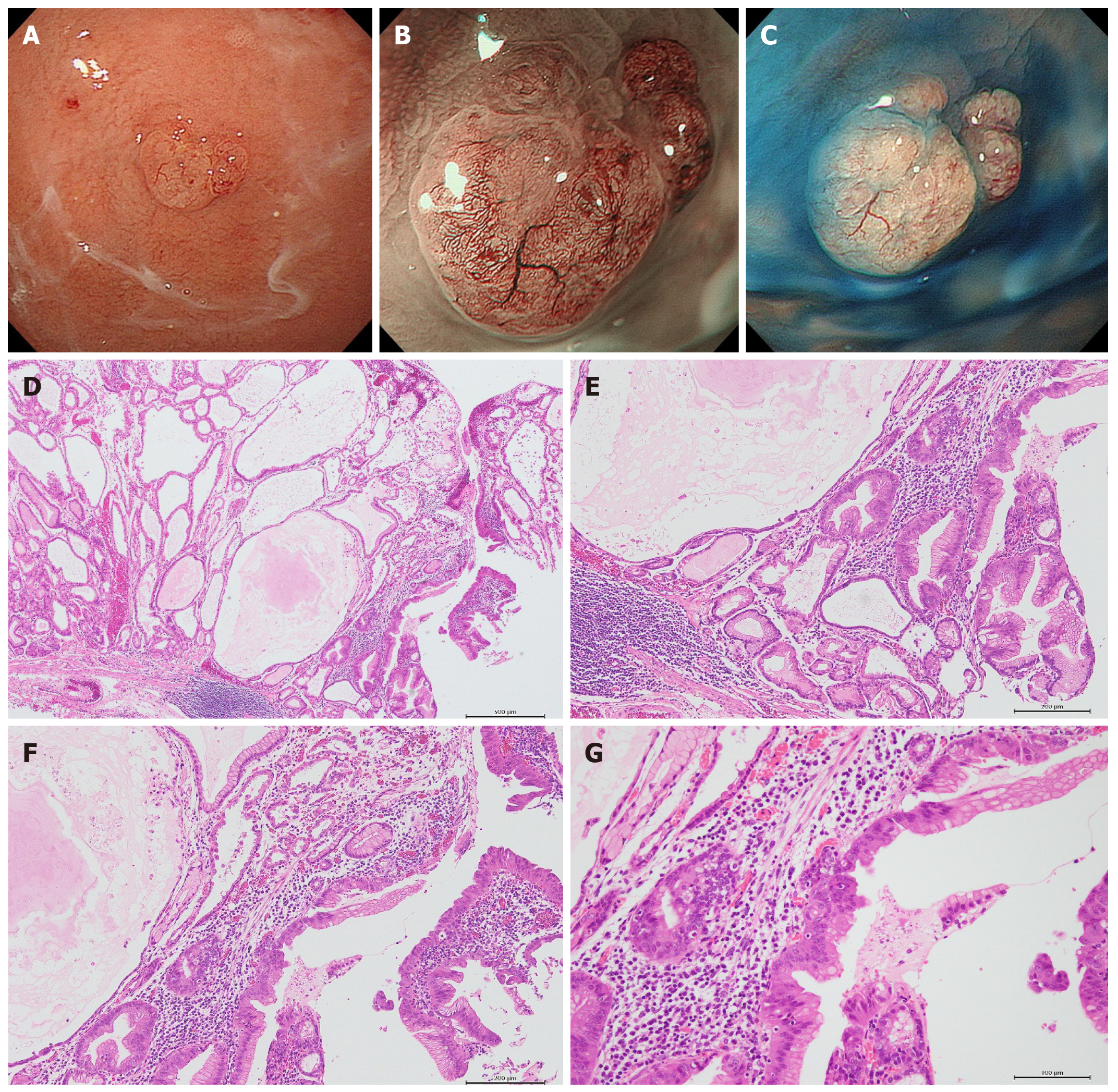Copyright
©The Author(s) 2021.
World J Gastrointest Oncol. Jul 15, 2021; 13(7): 662-672
Published online Jul 15, 2021. doi: 10.4251/wjgo.v13.i7.662
Published online Jul 15, 2021. doi: 10.4251/wjgo.v13.i7.662
Figure 2 A case of sporadic fundic gland polyp with carcinoma.
A: White light endoscopic view. A 73-year-old woman with a complaint of upper abdominal discomfort underwent esophagogastroduodenoscopy. She had received long-term proton pump inhibitor (PPI) therapy for gastroesophageal reflux disease. White light endoscopy identified several fundic gland polyp-like lesions in the body and fundus of the stomach without atrophic mucosa, suggesting a Helicobacter pylori (H. pylori)-uninfected setting. Among them, a 6 mm isochromatic sessile polyp with a slightly irregular surface structure was detected in the fundus; B: Magnifying narrow-band imaging (NBI) endoscopic view. Magnifying NBI endoscopy revealed irregular microvessels on the lesion surface; C: Chromoendoscopic view. Chromoendoscopy using indigo carmine dye more clearly revealed the irregularity of the lesion surface. This lesion was endoscopically diagnosed as a fundic gland polyp with dysplasia or carcinoma and was removed by the endoscopic mucosal resection technique; D: Histopathological view (low magnification). The histopathological examination revealed a fundic gland polyp with prominent dilated cystic glands often observed in patients receiving PPI therapy; E-G: Histopathological view (higher magnification of D). This lesion coexisted with epithelial dysplasia and intramucosal well-differentiated adenocarcinoma. Serological examination confirmed that she was negative for H. pylori infection. Colonoscopy as well as her family history showed no familial adenomatous polyposis.
- Citation: Sano W, Inoue F, Hirata D, Iwatate M, Hattori S, Fujita M, Sano Y. Sporadic fundic gland polyps with dysplasia or carcinoma: Clinical and endoscopic characteristics. World J Gastrointest Oncol 2021; 13(7): 662-672
- URL: https://www.wjgnet.com/1948-5204/full/v13/i7/662.htm
- DOI: https://dx.doi.org/10.4251/wjgo.v13.i7.662









